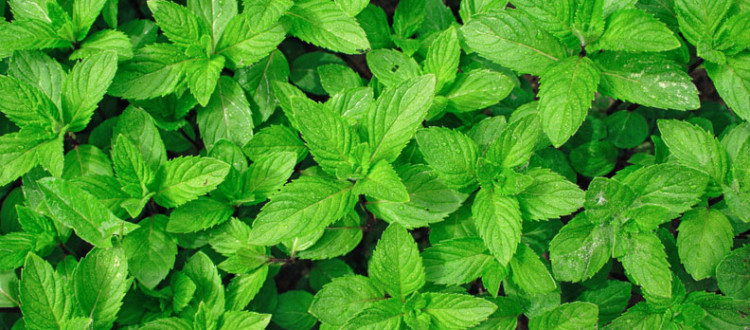Mint
Mint (Mentha) has over 30 different species, but the most common are spearmint (Mentha spicata) or peppermint (Mentha piperita). Mint contains menthol, a volatile oil, which gives mint its cooling, cleansing feeling on the palate. Mint is a hardy, fast growing aromatic perennial that can reach 1 to 3 feet in height and can spread aggressively due to rhizomes below ground and runners on top of the soil. Because of its tendency to spread, it is recommended to grow mint in a container.
Mint loves full sun but can tolerate some shade. Its leaves are generally dark green and produce a refreshing fragrance when the leaves are rubbed. Mint thrives with adequate water, so one plant of a couple of varieties can keep your family supplied with fresh mint leaves year round.
How to Plant
Select an area away from other plants in your garden, or an area that could use a good ground cover. Mint send runners out that produce spikes that grow upright and then flop over and reroot, and then repeats the cycle. Some consider the plant to be invasive, so growing mint in a container, in ground or above, is usually a smart idea. Be sure to use good soil and keep it moist, especially if the planting site receives full sun.
Mint is susceptible to rust, which appears as small orange dots underneath the leaf. An organic fungicide is recommended to treat this condition. Be sure to allow the leaves to dry completely between watering to help prevent rust.
Mint pests include whitefly, aphids, spider mites and mealy bugs.
Fertilizing
A mid-season application of a balanced organic fertilizer is recommended, usually after the plant has been cut back.
Harvesting
Harvesting the leaves is as simple as pinching them off at their base or clipping an entire stem. Unless you harvest the leaves on a regular basis, mint will benefit from a good pruning mid-season. An unpruned mint plant will produce long runners with progressively smaller leaves that are further apart. Clip the runners back from a third to half way back.
Recommendations for Use
- Spearmint is preferred for cooking. Peppermint is more intense and best for flavoring tea or other drinks
- When cooking peas, add a sprig of mint
- Add peppermint to lemonade, iced tea, and fruit salads
- Pineapple mint is delicious with fruit salads
- Add sweet mint to a pitcher of fresh drinking water and add ice for a refreshing summer beverage
- To relieve a tension headache, apply a compress of mint leaves to your forehead
Recipes: Minted Lemon Meyer Relish

